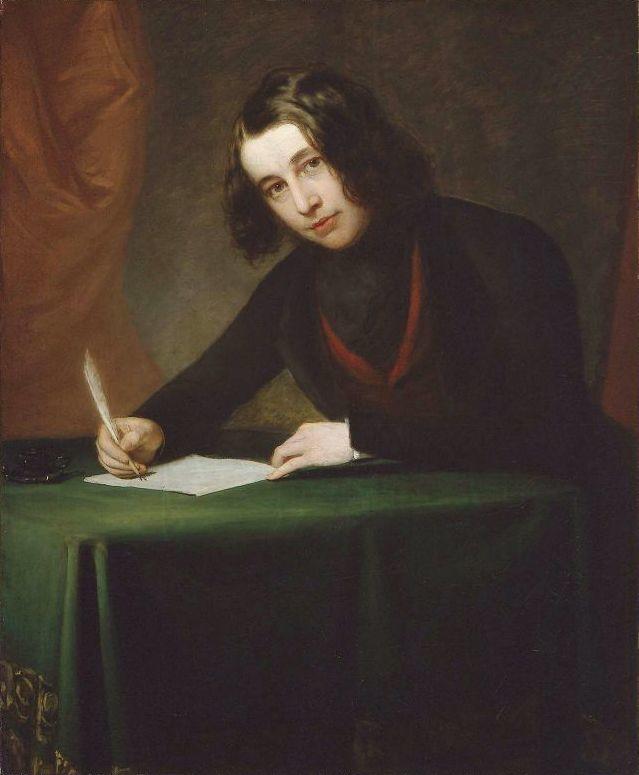Chapters
Charles Dickens was a master of the English language, and it is evident in his novella, A Christmas Carol. This book is one of many on the AQA GCSE syllabus and you may need to study it as part of your GCSE.
In this guide, we’re exploring the language used in A Christmas Carol to help you to understand how DIckens used his words to build an accurate representation of Victorian England and tell a transformative story of Ebenezer Scrooge.

Narrative Voice
Narrative voice is one of the most interesting uses of language in the book, and is definitely worth exploring when you are answering exam questions or writing an essay on the book.
The narrator uses a third-person limited omniscient voice, which means he knows everything about the protagonist, Scrooge. This means that Dickens can truly explore the character of Ebenezer Scrooge, and explain what is going on in his head. This makes sense due to the fact that the book is largely a character study on the protagonist.
Dickens uses narrative voice in a friendly and familiar way. Unlike a lot of fiction written at the time, he takes on an unsympathetic tone, meaning that the narrator himself shares opinions on the main character to build rapport with the audience.
'Oh! But he was a tight-fisted hand at the grindstone, Scrooge!'
This is particularly evident in the first stave of the book where the narrator also describes Scrooge as a “covetous old sinner” and has other cutting definitions of the main character.
Activity
Answer the following question:
What is the effect of the narrator using descriptive terms and giving an opinion on Scrooge? Would the book have been as effective in exploring his character without this use of language?
Dialogue
Dickens uses dialogue to characterise individuals, giving each character a distinctive voice that reflects their personality and social standing. The characters' speech patterns contribute to the overall texture of the narrative. For instance, Scrooge's curt and dismissive responses reveal his miserly nature, while the Cratchits' warmth is reflected in their conversations.
“If they would rather die,” said Scrooge, “they had better do it, and decrease the surplus population.”
Dickens also uses certain phrases to paint a picture of the character. Scrooge uses the words 'Bah!' and 'Humbug!' in response to people wishing him a merry or happy Christmas.
Authorial Intrusion

An interesting technique that further adds a level of familiarity and relationship with the narrator is the use of authorial intrusion.
Dickens frequently interrupts the narrative flow to provide commentary and moral reflections. These intrusions serve to emphasise the moral lessons of the story and Dickens's own social commentary. For example:
"External heat and cold had little influence on Scrooge. No warmth could warm, no wintry weather chill him. No wind that blew was bitterer than he..."
Pathetic Fallacy
Pathetic fallacy is the technique of attributing human capabilities and feelings to other objects.
As the Cratchits prepare their Christmas meal, Dickens explains:
“the slow potatoes bubbling up, knocked loudly at the saucepan-lid to be let out and peeled”
Pathetic fallacy is often verging on silly, and in this case the idea of potatoes having a capacity to want to be peeled and join in the celebrations adds to a sense of joy and exuberance in the scene.
Pathetic fallacy can also explain the use of the weather throughout. As we’ve already explored, Dickens explains the feel and emotions of the story through the weather.
At the start of the book he uses dramatic and fierce descriptions of the cold “Piercing, searching, biting cold.”
After Scrooge undergoes his transformation the use of language changes: “No fog, no mist; clear, bright, jovial, stirring, cold; cold, piping for the blood to dance to noise.”
Alliteration and Lyrical Prose
Charles Dickens skillfully employs alliteration "A Christmas Carol" to enhance the musicality of his prose and create memorable, rhythmic passages.
Much of Dickens’ writing has a lyrical tone to it, and the musical qualities are clear in A Christmas Carol. Think of the following quote and how it uses alliteration, plus the impact this has.
“No warmth could warm, nor wintry weather chill him.”
Vivid Descriptions
Another way that Dickens creates a rich scene is through use of some very vivid descriptions. Dickens's narrative voice is a lesson in English language that creates a vivid atmosphere. He employs sensory details to evoke the sights, sounds, and emotions of Victorian London during Christmas. For instance:
"The air was filled with phantoms, wandering hither and thither in restless haste, and moaning as they went."
This descriptive richness contributes to the immersive experience, allowing readers to feel the cold, hear the sounds, and sense the emotions of the narrative.
Simile
Dickens uses similes masterfully, often adding further drama and exaggeration to some of the passages of the book, and helping to explain the characters in much more detail.
“Marley’s face. It was not in impenetrable shadow as the other objects in the yard were, but had a dismal light about it, like a bad lobster in a dark cellar.”
The description of a “bad lobster in a dark cellar” is particularly dreary and helps with the themes of light and darkness in the book, which begins with a dark and often sinister feeling before Scrooge changes his ways.
Simile is also used to describe Ebenezer Scrooge, as he uses terms like “Hard and sharp as flint” to teach the audience about our protagonist.
Activity
Examine the very first passage of the book.
“Marley was dead: to begin with. There is no doubt whatever about that. The register of his burial was signed by the clergyman, the clerk, the undertaker, and the chief mourner. Scrooge signed it: and Scrooge's name was good upon 'Change, for anything he chose to put his hand to. Old Marley was as dead as a door-nail.”
- What literary techniques is Dickens using?
- What is the impact of repetition in the passage?
- Does the author use a simile in this section?












